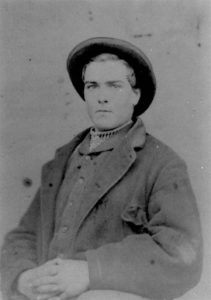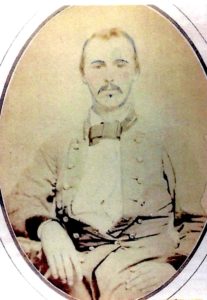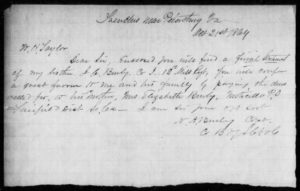John Kirkpatrick, Tioga County, PA (c. 1860)
29 May 2023
This is John Kirkpatrick, who enlisted in the 45th Pennsylvania Infantry in October 1861, probably 16 or 17 years old, and was mortally wounded at Antietam not quite one year later. Thanks to descendant Barry van Brunt for sending me this superb photograph.
Lt I.Q. Perry (c. 1861)
24 May 2023
Lieutenant Ivory Quinn Perry of Company A, 19th Mississippi Infantry was wounded in the foot and captured at Sharpsburg on 17 September 1862 and afterward disabled for active service. This photograph of him in uniform was kindly contributed to the FamilySearch database by Natalie Brannon in July 2022.
Captain Noah A Burly, a Captain in the 17th South Carolina Infantry sent the following to the Confederate authorities in Richmond, VA on behalf of his brother James Calvin Burly, late of the 12th Mississippi Infantry.
James was wounded at Sharpsburg in September 1862 and again, mortally, at Gettysburg in July 1863.
Notes
This document is among those in James’ Compiled Service Records, now in the National Archives, Washington, DC, and online thanks to fold3. It was particularly interesting to me because it has the brothers’ surname handwritten as Burly. Most family records and grave markers spell it Burley.
My transcription:
[reverse]
W.H. Taylor Esq
2d Auditor’s Office
Richmond, VaTrenches near Petersburg Va
Oct 21st 1864W.H. Taylor
Dear Sir, Enclosed you will find a Final Statement of my brother, J.C. Burly, Co. I, 12th Miss Regt. You will confer a great favor to me and my family by paying the dues called for to his Mother, Mrs Elizabeth Burly, Monticello P.O., Fairfield Dist, So. Car__ I am res your obt svt
N.A. Burly. Capt.
Co B 17 SC Vols



